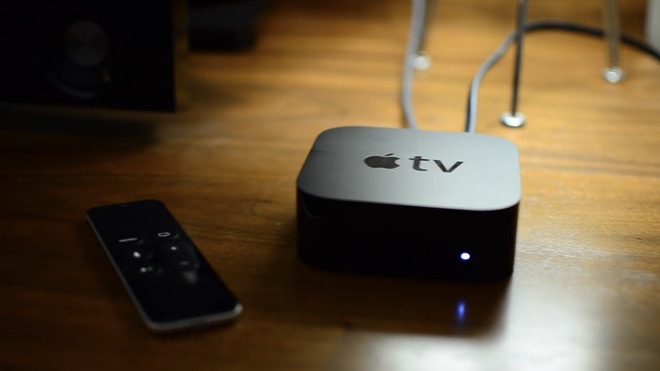GAMINGBOLT.COM
Monster Hunter Wilds Will Be One of 2025s Biggest Must-Play Games
Monster Hunter has always been one of Capcoms biggest money-making franchises. Ever since its debut over two decades ago, the action RPG franchise has enjoyed a meteoric rise in success and popularity, and though initially much of that was limited to a Japanese audience, with the seminalMonster Hunter World,the series turned into a worldwide sensation. Indeed, the 2018 title enjoys a stellar reputation, while also being the biggest ever commercial success in the entire history of Capcom, whileMonster Hunter Rise,which released in its aftermath, has also seen widespread success, both critical and commercial.Now, the series is ready to step forward into the limelight once again. Its next mainline entry,Monster Hunter Wilds,has been in the works for years, and ever since it was first showcased over a year ago, excitement surrounding it has continued to grow. Based on the reputation of the franchise alone, its easy to see how the game is likely going to be one of the biggest and most successful releases of the year (unless Capcom screws up in unexpected ways)- but looking beyond that and at the game itself, theres a bucketload of improvements and changes to be excited about.TheMonster Hunterformula is obviously an incredibly addictive one. Its been that way ever since the series inception, and has only improved with time, with improvements and refinements brought about the technological leap forward that wasMonster Hunter Worldbringing it to entirely new heights. The upcomingWilds, however, doesnt seem to be content with not fixing what aint broke. In the months leading up to its release, Capcom has spoken of a number of tweaks and changes, major and minor, that are promising to build on the series beloved formula in key ways.Take, for instance, the fact thatMonster Hunter Wildsis taking multiple steps to make the experience feel much more seamless. Travelling between your hub village and the games multiple open world maps will be entirely seamless, for starters. Meanwhile, the quest board in the central village will also no longer be the only way to pick up a new quest. Simply finding your quest target in the world will dynamically begin the mission. And once that mission is done, youll no longer have to return to the village either, with the campsites that you establish throughout the maps serving as places where you can replenish your supplies.Then there are the changes being made to the monsters themselves, who, of course, are always the highlights of anyMonster Hunterexperience. Specifically, Capcom says it is continuing to make improvements to the monsters AI. That means they will behave more realistically than ever before, and that the game will feature ecosystems that will be way more complex and reactive, with the constant push-and-pull of different species of herbivores and carnivores and the environments surrounding them creating an ever-shifting and dynamic world for players to navigate.Other major features are also promising to heighten that sense of dynamism and immersion. For instance,Monster Hunter Wildswill be putting a much greater emphasis on weather and extreme weather events, as was made perfectly clear by the games sandstorm-filled announcement trailer itself. That weather, of course, will not only affect your surroundings and how you move around, but also the behaviour of the monsters populating that area (something that will happen courtesy of the games new dynamic day/night system as well).Thats far from the extent of similarly promising improvements being made to theMonster Hunterformula withWilds, and based on everything shown so far, the end result may very well be yet another ingenious evolution for the beloved franchise. Of course, its worth acknowledging that the games beta did raise concerns about its technical condition, and whether itd be able to carry the weight of its ambitions at launch. Capcom has, however, assured that key improvements are being made to the game based on that very feedback, so the hope is that the company will have made enough polishing passes by launch.And of course, when Monster Hunter Wildsdoes launch not long from now, if it is as good as it is looking like its going to be, there should be little doubt in anyones mind that its going to be a major hit for Capcom. The series always tends to enjoy widespread acclaim and high scores, especially in recent years, and youd expect that to be the case once again. On the commercial side of things, meanwhile, its very, very likely that things will be just as good, if not even more so. As mentioned previously,Monster Hunter Worldis the bestselling Capcom game of all time with over 27 million units sold.Monster Hunter Rise,meanwhile, sits in second place, with 16 million sales. Their expansions,IceborneandSunbreak, have sold 14 million and close to 9 million units respectively.All of which is to say thatMonster Hunter,ever a big seller, has become even more of a guaranteed money maker for Capcom in recent years, and its very likely that the company will be expecting similarly rapturous success from its upcoming next instalment. In a year that is purportedly going to see the release ofGrand Theft Auto 6, and in all likelihood, a newMario Kartgame, it might be premature to say thatMonster Hunter Wildswill end the calendar as 2025s biggest seller. But even if it doesnt grab that crown, there should be absolutely no doubt in anyones mind that it will absolutely be one of the years biggest sellers.In fact, whenWildsopen beta went live in November, we saw ample evidence of just how much hunger there is out there for a newMonster Hunterexperience, with the beta seeing a peak of over 463,000 concurrent Steam players. The beta, of course, was free, but its easy to imagine just how massive of an audience the full game is going to attract across all platforms when it launches at the tail end of February. On top of that, if it eventually also ends up releasing for the Nintendo Switch 2 like leaks have claimed in the past, its going to rake in even more sales, and add yet more to its player numbers.Capcom has done a fantastic job of nurturing and expanding theMonster Hunterfranchise over the course of two decades, and withWorldseven years ago, the publisher firmly established the series as a juggernaut of the industry. Excellent post-launch support and the endlessly replayable nature of the game itself has kept players coming back to the 2018 classic in droves even now, years on from its release, and of course,Monster Hunter Risehas also contributed to the series growth. Now, however, with a newMonster Huntergame on the horizon, the excitement within the fanbase is palpable, and its easy to see why. After all, the major steps forward that the series has taken in series years have all proven thoroughly successful. IfWildsshould keep that trend going, were likely going to be in for yet another jewel in Capcoms dazzling crown.Note: The views expressed in this article are those of the author and do not necessarily represent the views of, and should not be attributed to, GamingBolt as an organization.










/https://tf-cmsv2-smithsonianmag-media.s3.amazonaws.com/filer_public/c0/25/c025a9a6-c0b7-4398-9467-8f9bab1cb843/head_of_vaderi.jpg)